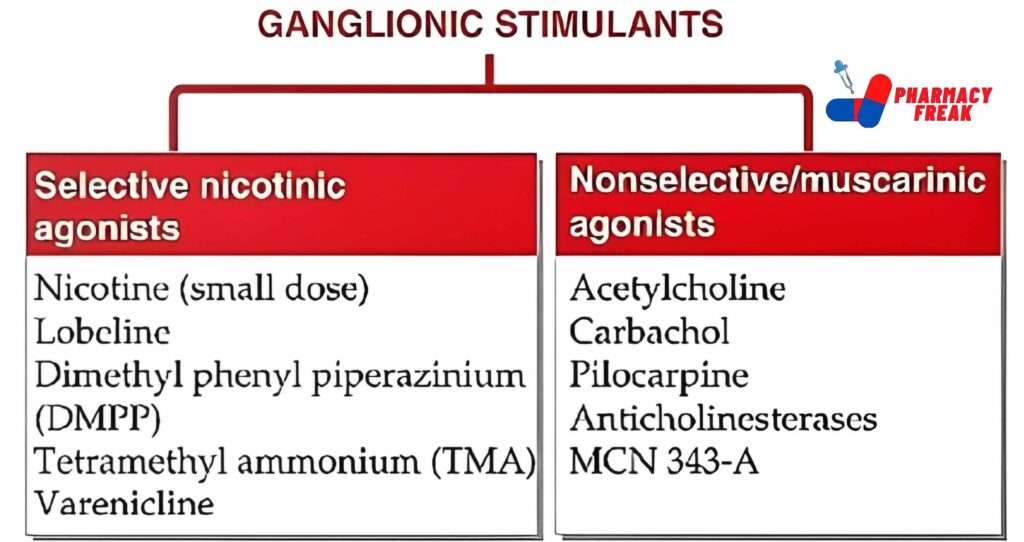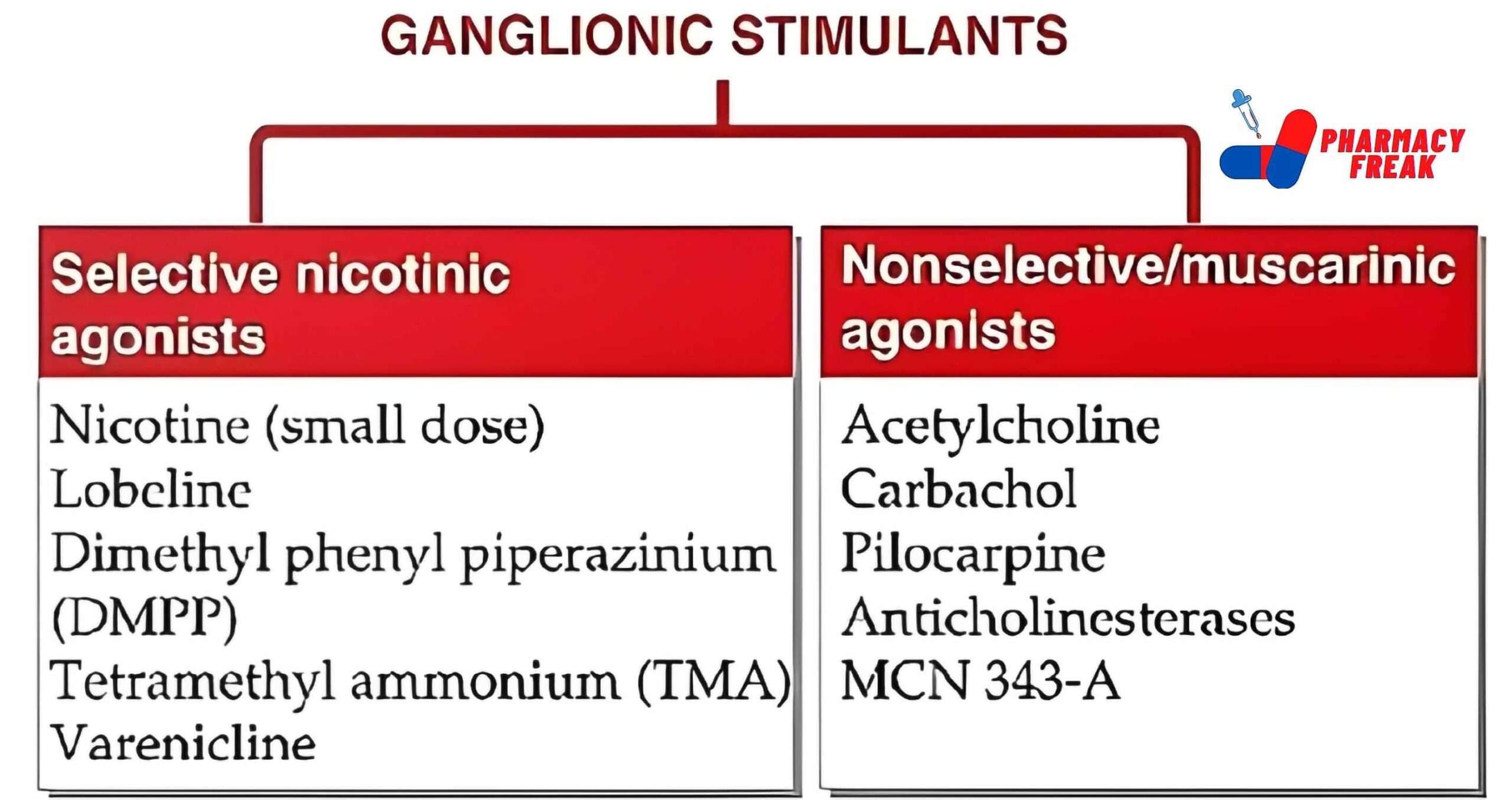Ganglionic stimulants
Ganglionic stimulants are drugs that activate the autonomic ganglia. These are nerve cell clusters that regulate involuntary functions such as heart rate, blood pressure, and digestion. They were historically used to treat conditions such as hypotension and urinary retention, but are now rarely used due to their high potential for adverse effects, such as hypertension, tachycardia, and gastrointestinal disturbances.
Classification

GANGLIONIC STIMULANTS
- Selective nicotinic agonists– Nicotine (small dose), Lobeline, Dimethyl phenyl piperazinium (DMPP), Tetramethyl ammonium (TMA)
- Nonselective/muscarinic agonists– Acetylcholine, Carbachol, Pilocarpine, Anticholinesterases, MCN 343-A, Varenicline
Related Links
Reference
- CLASSIFICATION OF DRUGS- KD Tripathi
- National Library of Medicine- Ganglionic stimulants (N K Bissada, L T Welch, A E Finkbeiner)
